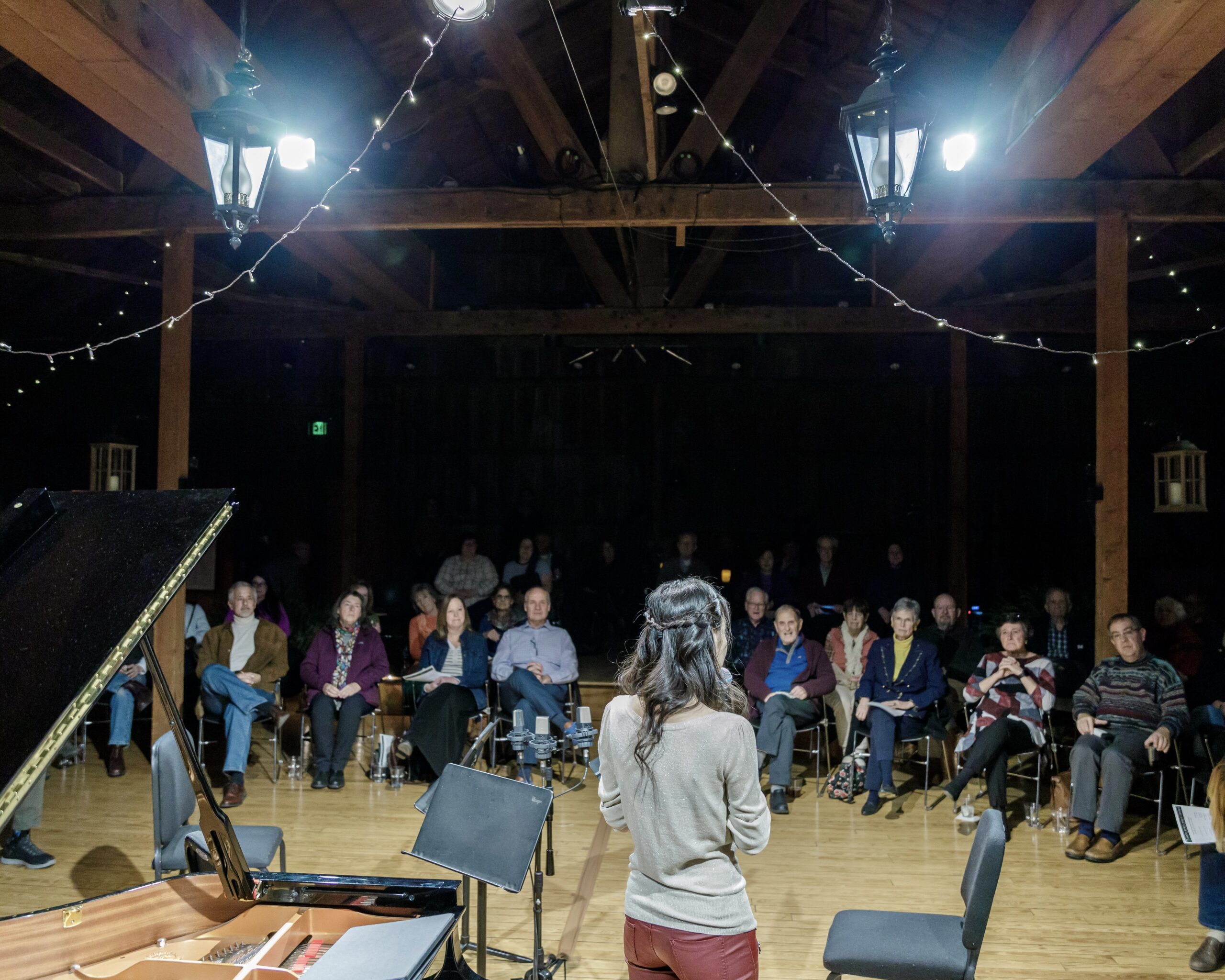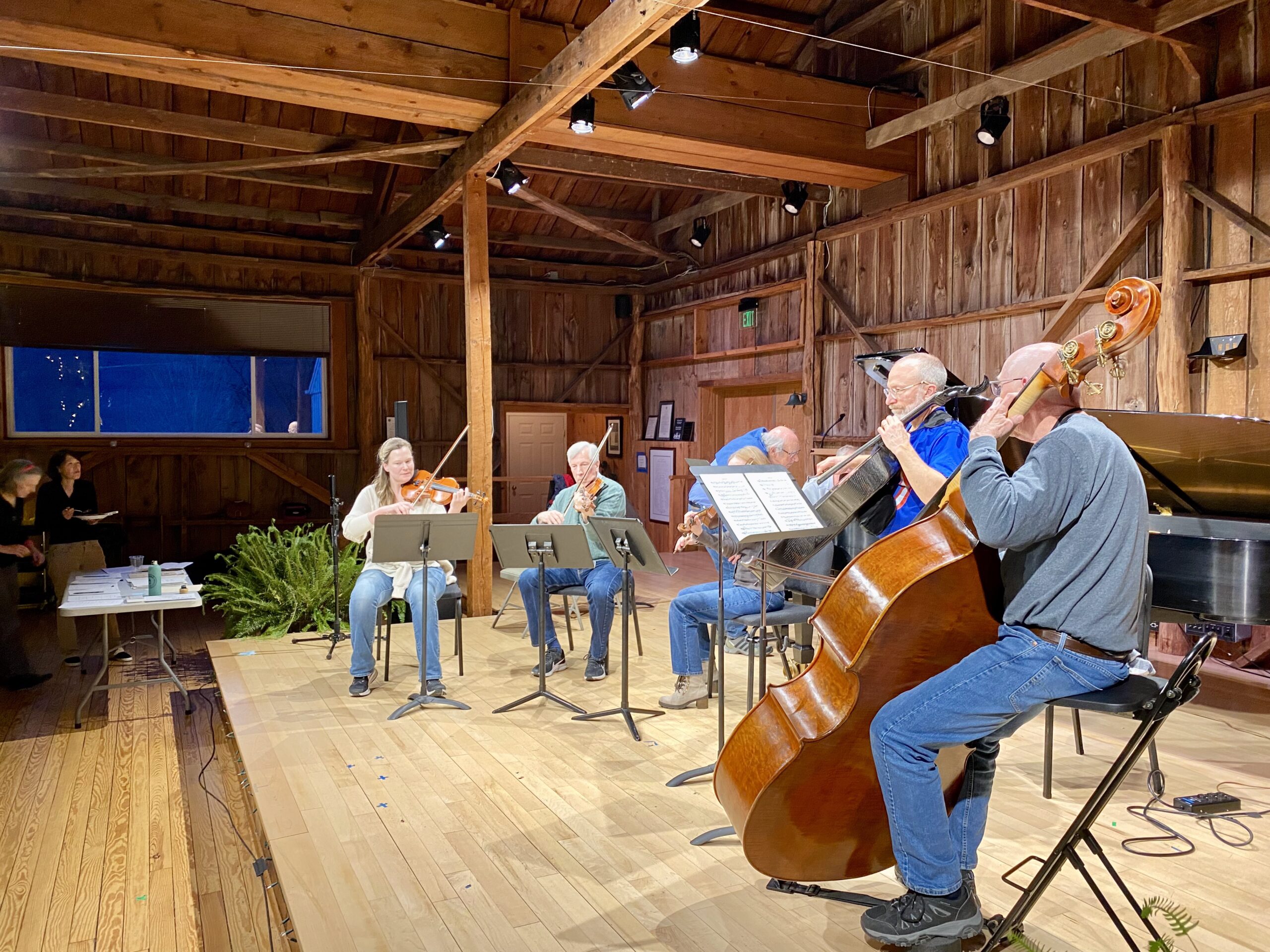
Like a typical teen, I tried to do the opposite of everything my mom did. Chopin was her thing, so I went in the spikier direction of Bartok, Prokofiev, and Shostakovich. From the years from age 15 to 24, I did not touch a single piece of Chopin’s, even though I had consistently performed his music since I was 7. I told myself I was sick of Chopin, when really, I was only sick of the last piece I had played, the entirely unsatisfying Andante Spianato et Grand Polonaise. (I still can’t sit through a performance of that piece. It’s just frilly showmanship, with just one page of beauty that is followed by a million pages of elaborate fluff. Seriously – it never ends. I hated practicing that piece.)
Thankfully, I came to my senses. It was the E major Chopin Scherzo that made me rediscover the heartbreaking beauty of his writing, and made my mother laugh with glee.

See, this memory is where the title of Saturday’s concert came from. That, and the fact that my most tender remembrance as a child was drifting off to sleep to the sounds of my mother practicing the lullaby section from that Scherzo.
For this Saturday, I wanted to share with you the 24 op.28 preludes, not only because they are my favorite, but because they are, in my opinion, his best work for piano. Each prelude is a vivid microcosm, containing such powerful writing that continues to grow with each successive experience.

In Chopin’s time, the “prelude” had ceased to have any relation to it’s original meaning. Obviously, Chopin’s preludes do not precede a larger body of work, much like the later preludes of Debussy, Rachmaninoff, or Scriabin. Instead, they stand on their own as miniatures, each with their own distinct personalities and moods. The nature of these concentrated characterizations cause many to associate each prelude to a specific image. This is not to say, however, that these are easy or even pretty images. Take the eerie A minor prelude (no.2) for example, where the creepy dissonances of the accompaniment, whispering out the Dies Irae, grate against a right hand line that is more sigh than melody. Here is a specter of death, all too inevitable for the already ill composer, whose health was deteriorating during the writing of the preludes. Similar in strangeness are the fleeting shadows of the e-flat minor prelude (14), 38 seconds of terror crawling across the piano, or the terse power of three-lined dirge of the c minor (20). The emotions traversed in the preludes run the gamut of human experience, where the innocent bubbling of G major prelude (3) gives way to the sinking lament of the E minor (4), or the cannon-fire of the G-sharp minor prelude (12) is followed by pastoral serenity in F-sharp major (13).

These preludes, often played in selections, are best experienced as a set. Not only was that Chopin’s intention (he chose to publish them under one opus number despite taking four years to write them, and arranged the preludes in a series of related keys, with every major key succeeded by its relative minor), but the deeper, overarching meaning of the work can only be seen when you can start seeing the correlations between preludes. The amount of times he cuts through absolute quiet with a gunshot like single note, or the amount of times preludes ends in the roiling deep depths of the piano. Or the amount of times uneasy preludes are ended with a chorale cadence, or the amount of times that exact same chorale voicing is used for an aggressive close that is as harsh and final as the chorales were soothing. For me, the totality of the preludes show me a struggle against fate, but with an admiration of a power greater than human.
But that is not a prescription! The best thing about the preludes is the fact that they portray so many striking emotions, and experiencing them rewards one with a new personal connection every time. I hope it may do so for you as well.
But that is not a prescription! The best thing about the preludes is the fact that they portray so many striking emotions, and experiencing them rewards one with a new personal connection every time. I hope it may do so for you as well.

There are also some posthumous preludes, op.25, 45, and one reconstructed from fragments nicknamed the “devil’s trill” (after Tartini’s devil’s trill violin sonata). They are worth hearing and may make an appearance.














